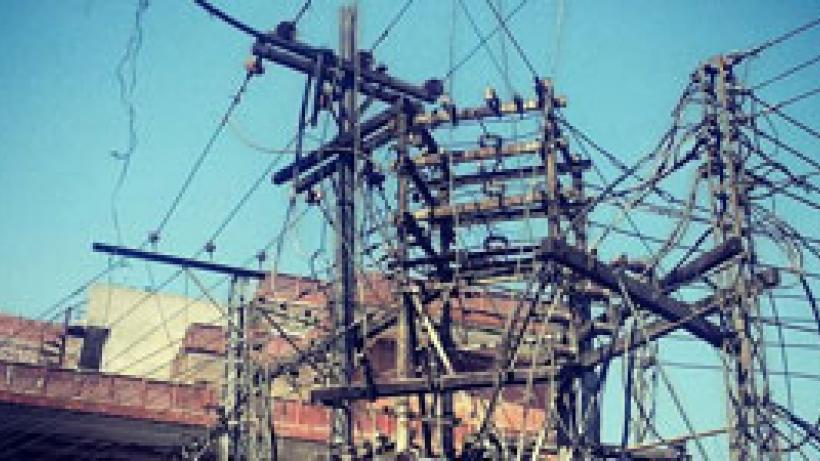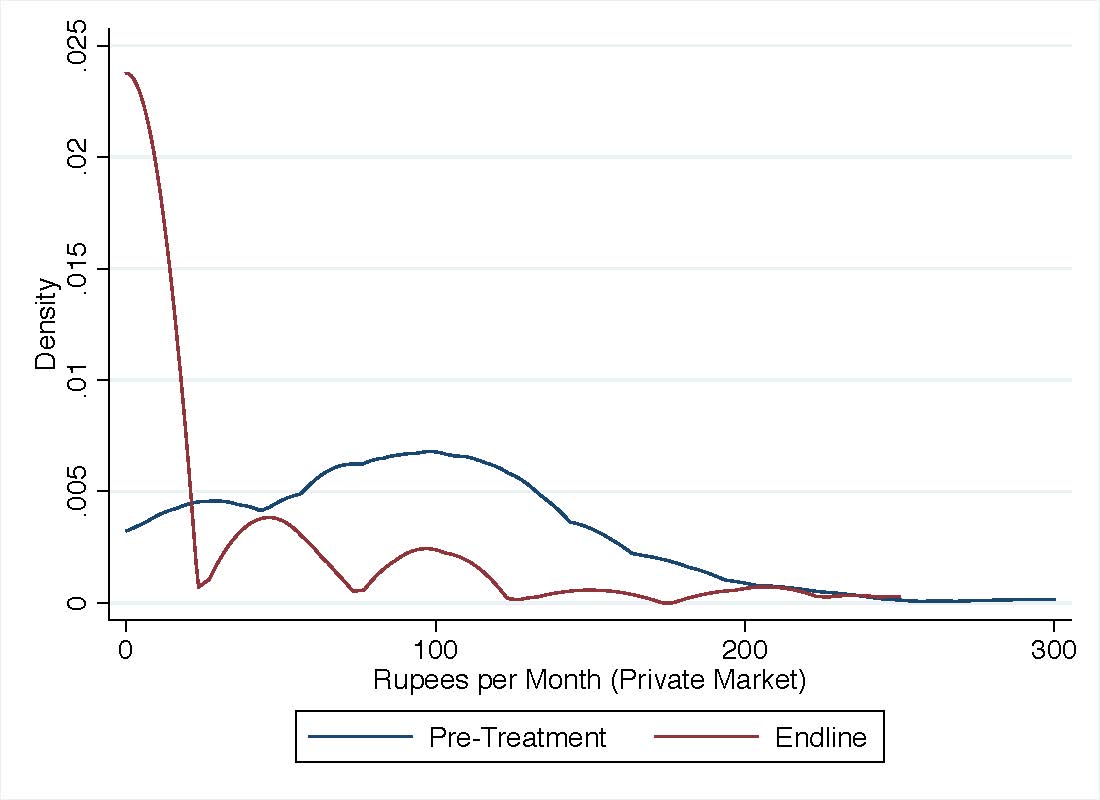
#PoweringGrowth: 3 new facts from the IGC Energy Conference
In today’s blog, we bring you highlights from the recent IGC Energy Conference, capturing new ideas and evidence on policies to fight energy poverty. Most of these are fresh findings that haven’t been published yet!
The idea that affordable and reliable energy is tightly linked to a country’s economic growth is not one that many people question. What does remain unanswered are questions of how energy can be sustainably generated for both urban and rural contexts in order to meet the demands of industry, firm, and household consumers in developing countries. The IGC Energy Conference brought new evidence to these issues with a focus on the willingness of poorer consumers to pay for electricity, economic and social impacts of electrification, and innovative uses of electrification data.
Key facts
#1 Prepaid metering may improve access to electricity and reduce utility costs for lower-income customers
Expanding energy access in developing countries requires solutions that recognise that unconnected households tend to be poorer with limited cash on hand. These customers struggle to pay large, unpredictable monthly utility bills. Kelsey Jack presented recent work (co-authored with Grant Smith) in South Africa that explores the effects of introducing pre-paid electricity metering, a potential solution to this problem. Similar to pre-paid phone credit, customers load credit onto pre-paid electricity meters using an encrypted code purchased from local vendors. Once the balance falls to zero, the power shuts off. Pre-paid meters are being rapidly rolled out in low- and middle-income countries yet the effects of introducing this technology have not previously been well tested.
Jack and Smith examined a sample of over 2,000 households on the grid in Cape Town that were involuntarily switched to prepaid metering in late 2014. The main finding is that introducing prepaid meters led to a 10% drop in daily electricity use (see Figure 1– a savings equivalent to shutting off a 60-watt incandescent bulb for 24 hours.

Figure 1: Usage kWh
What caused the drop? It seems that using prepaid meters made customers more aware of their energy expenditures, in addition to forcing them to actually pay for every kWh they consume on time. The switch to pre-paid electricity therefore has the biggest effect on households that were previously in debt to the city or had a history of late bill payment.
Prepaid meters introduce a new way for poorer households to monitor and reduce their electricity usage. The number of pre-paid meters in Sub-Saharan Africa is forecasted to double over the next decade.
pre-paid electricity therefore has the biggest effect on households that were previously in debt to the city or had a history of late bill payment.
More research is needed on how to increase their effectiveness in order to sustainably improve energy access for poorer households.
#2 Solar micro-grids can improve household lighting, health and safety, but their potential to catalyse economic transformation through improved productivity may be limited
In regions where grid connections are unavailable or unreliable, off-grid alternatives may be a feasible way of improving household welfare and productivity. Exploring this question, Johannes Urpelainen (with co-authors Michaël Aklin, Patrick Bayer, and S.P. Harish) presented work with Mera Gao Power, a solar micro-grid provider, to assess the impact of solar lighting on rural households in Uttar Pradesh, India.

Figure 2: Private kerosene spending among solar product users
Mera Gao offers a simple, cheap DC system that includes two LED lightbulbs with mobile phone charging, at a monthly price of about $1.50 per household – more expensive than grid electricity, but more reliable and still affordable to most rural villagers.
The research found that shifting to solar power means improved lighting quality, lower risks to health and safety and a reduction in monthly kerosene expenditures by households adopting the micro-grid connection, as illustrated in Figure 2. Household’s that adopted the microgrid received an average of 1-4 hours more electricity a day, and electricity access increases by 23 to 78 percentage points.
The research also pointed out some limitations. In particular, solar electrification did not lead to detectable ‘transformative’ socio-economic benefits for households. There was no evidence that lighting enabled households to increase savings or shift more time towards studying, working, or home businesses.
Solar is currently only used by 1% of rural households in India, but without needing larger-scale financing or government subsidies, micro-grids could be readily scaled up. Overall, the findings raise some questions about how much money should be spent subsidising these types of schemes, however.
solar electrification did not lead to detectable ‘transformative’ socio-economic benefits for households
If lighting can be provided cheaply through off-grid solutions this seems a worthy investment to expand household energy access, especially since small reductions in costs can improve takeup rates. However, larger-scale activities such as industrial manufacturing and irrigation with the potential to more broadly transform rural productivity are too costly to power through solar micro-grids.
#3 Satellite data is a potentially transformative tool for measuring and monitoring progress on electrification
Brian Min presented ‘Audits from Space’ demonstrating the utility of satellite data to monitor progress on rural electrification. Min’s work addresses the question: do villages get brighter after electrification?

Figure 3: Impact of electrification
Figure 3 illustrates the impact of electrification from the Rajiv Ghandi Grameen Vidyutikaran Yojana (RGGVY) programme, which the Indian government launched in 2005 to electrify rural villages.
Drawing upon an archive of nightly satellite imagery captured from 1993 to 2012, Min compared the observed brightness of RGGVY villages before and after their official date of electrification. Surprisingly, only about a quarter of villages increased in brightness upon electrification. In most villages, there is no evidence of greater use of electricity associated with outdoor lighting, even after the villages were officially designated as successfully electrified. This suggests that electrification efforts require ongoing investments in access and service provision, even after the official work of electrifying a village is complete.
Merging satellite imagery and election data, Min finds new village electrification projects in India are more effective in areas where political incumbents were elected by smaller margins –competitive elections it seems makes politicians work harder for project success.
Satellite technology is a powerful tool for auditing, tracking and monitoring investments in infrastructure. Replacing traditional household surveys or in-person visits, satellite data could be cheaper and offer higher coverage. Greater resources and institutional capacity will be required to remove ‘noise’ to make the data more meaningful. DMSP and VIIRS satellite data on night lights is publicly available here from the U.S. National Oceanic and Atmospheric Administration (NOAA) for anyone interested.
The research raises questions on the role of information in enhancing accountability and responsiveness of service providers. There is a broader need to focus on governance and transparency issues in the fight against energy poverty.
new village electrification projects in India are more effective in areas where political incumbents were elected by smaller margins
Prayas’s website www.watchyourpower.org is an interesting example featuring maps and visualizations of power quality and outages across geographic areas in India. The Electricity Governance Initiative led by the World Resources Institute also has a number of interesting initiatives in this area.

